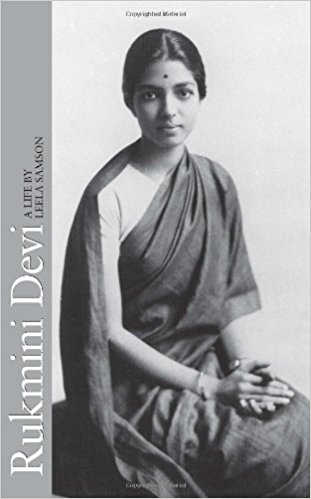The book under review written by an eminent artist with emotional appeal has twelve hapters with impressive photographs and lay-out and is not too unwieldy for capturing the salient features of the life of a colossus that Rukmini Devi was. In the preface the author says that she started her research in 1992 collecting data regarding years, dates, people and places. When she returned to Kalakshetra after 13 years, many documents she had put aside were missing and diaries eaten by white ants. She gratefully acknowledges her resource persons Sankar Menon, Dr Padmasini and Kamala Triloksekar and has dedicated the book to them. The chapter Early Years opens dramatically with a scene in 1978, when Rukmini Devi in ripe age is interacting with yet another senior Engineer, D. Appukuttan Nair, for completing their Madhyama Vikrishta type of auditorium with concepts from Natyasastra coupled with modern facilities. Nothing in the theatre had passed without her scrutiny—for example—the soaring roof with steel girders painted in the same colour as timber.
This is perhaps her last and most ‘concrete’ contribution to the stream of Indias arts that she loved with such a passion. She had touched the lives of many individuals. Her own connection drew many to strive for ideals that were dear to her—she was Rukmini Devi Arundale.

